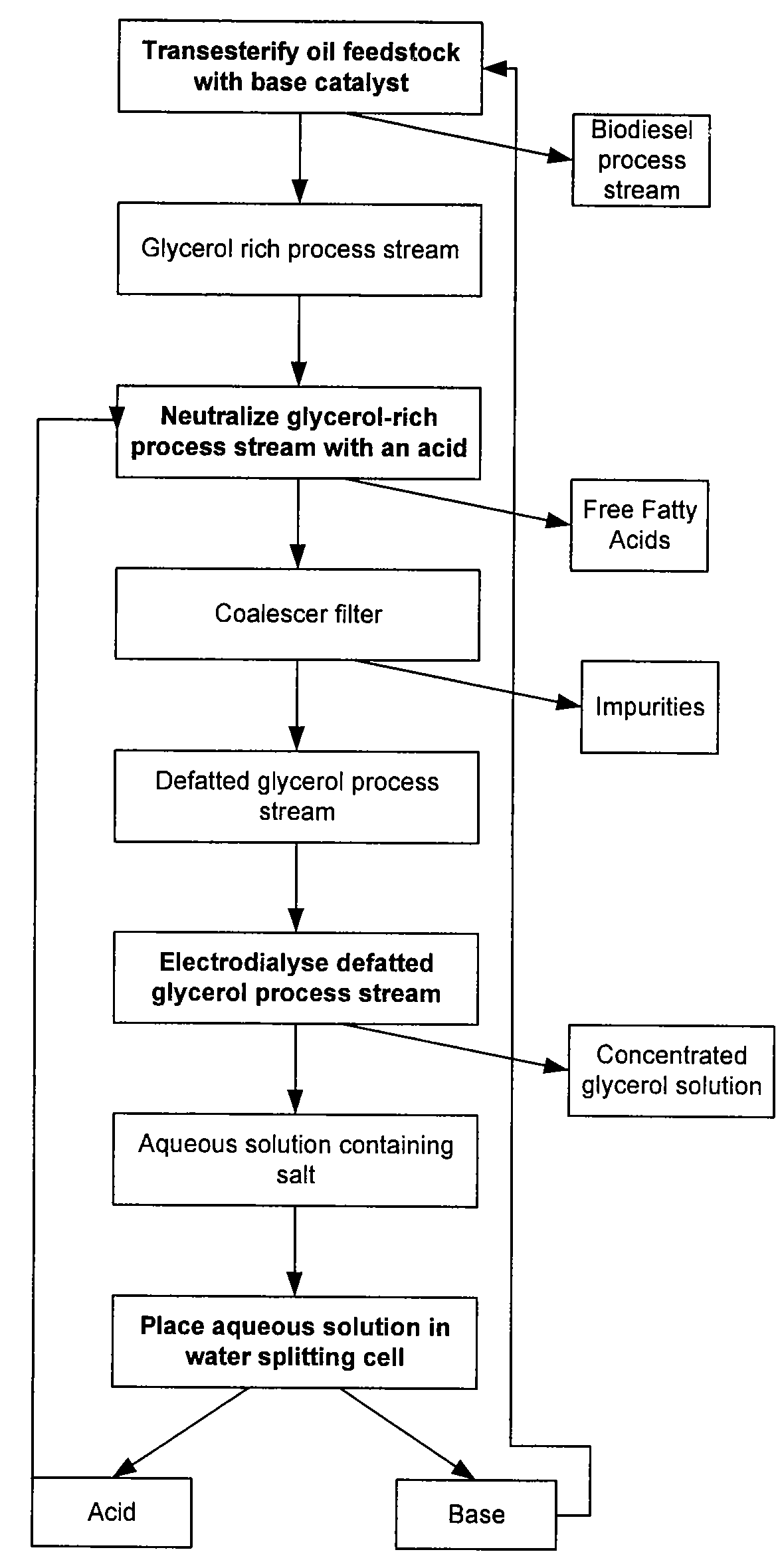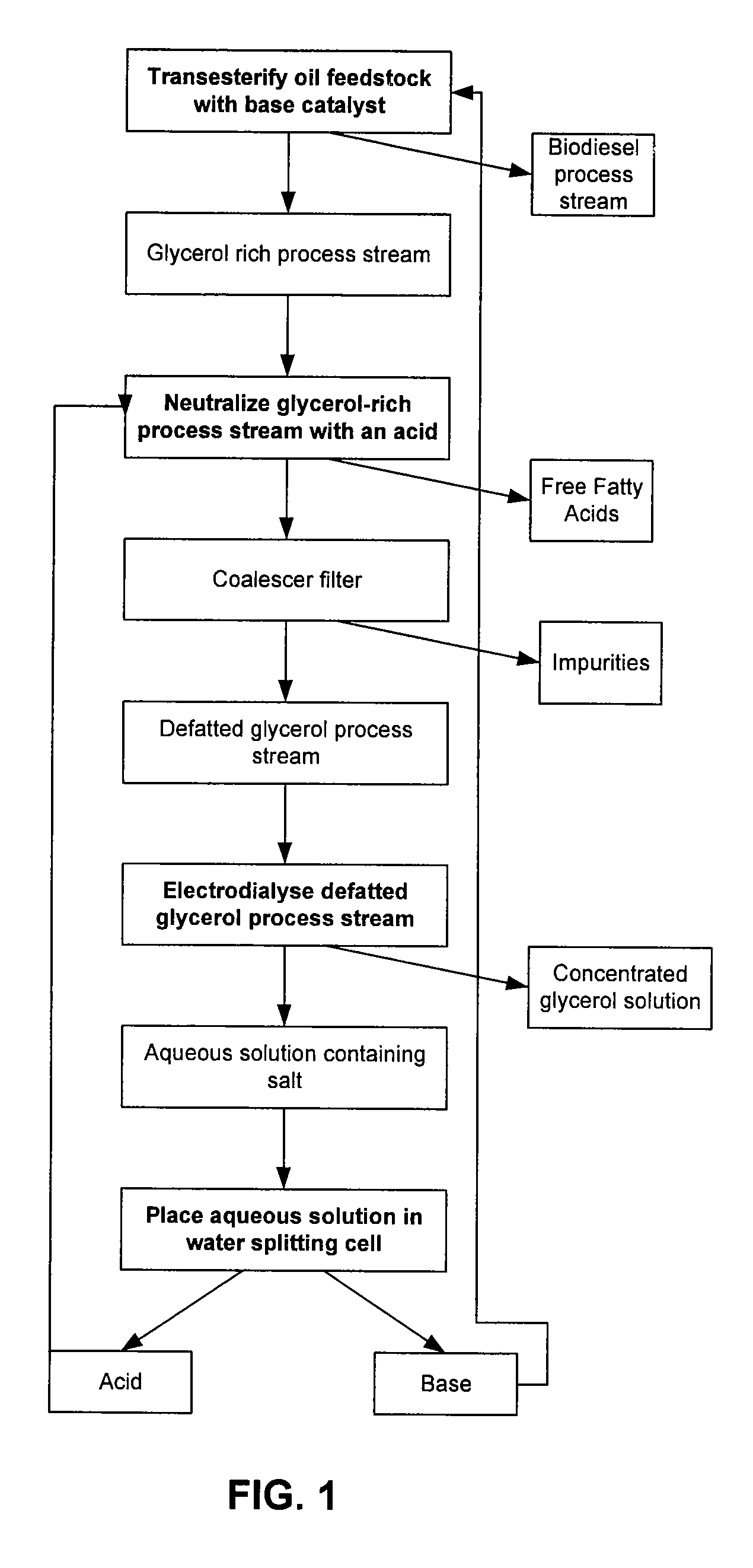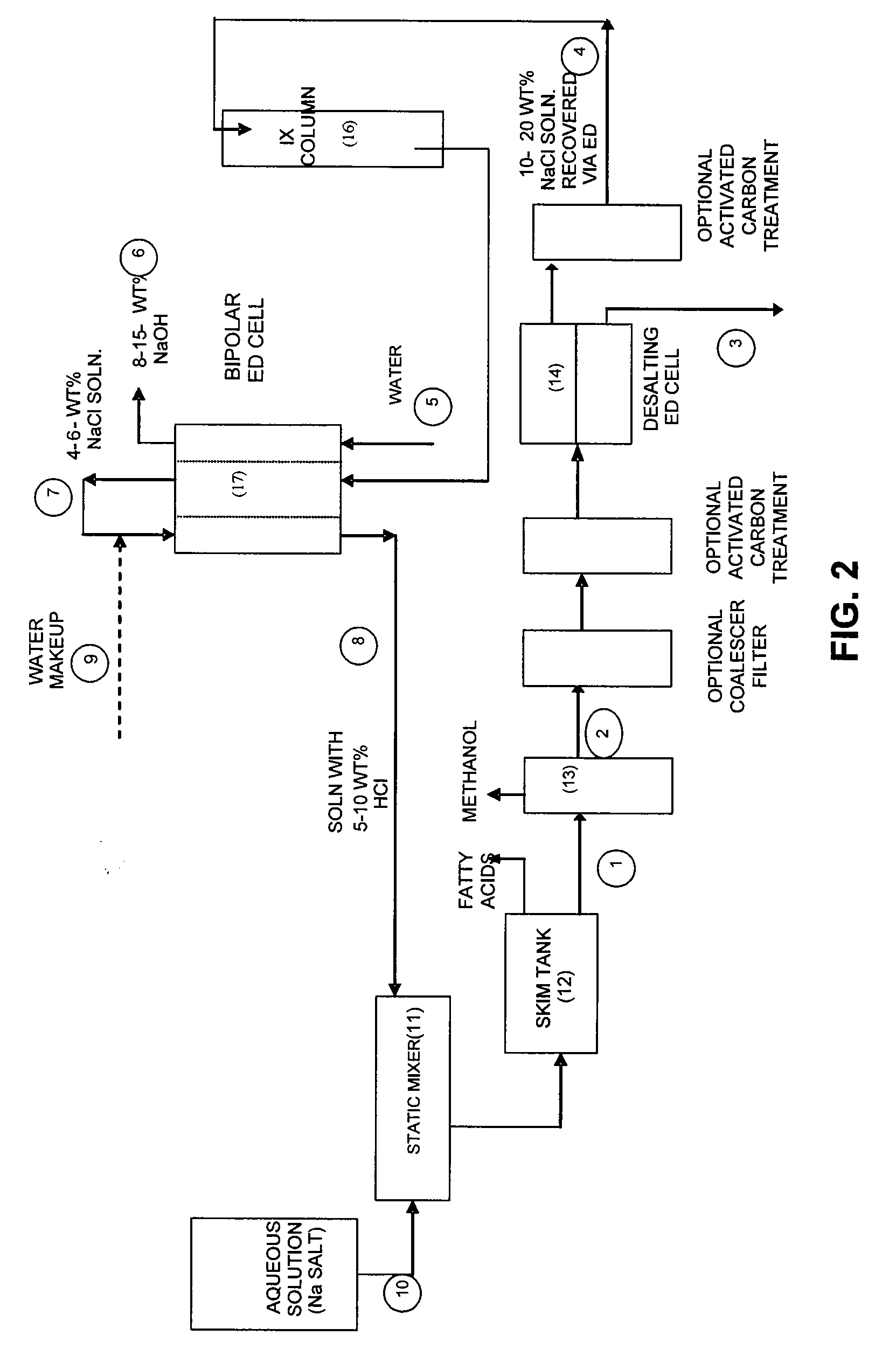Process for Desalting Glycerol Solutions and Recovery of Chemicals
a technology of glycerol solution and desalting glycerol, which is applied in the direction of refrigeration components, electrodialysis, diaphragms, etc., can solve the problems of catalyst toxic and reactive, residual alkali catalyst (base catalyst) rendered ineffective, and difficult removal of soap from the glycerol-rich process stream
- Summary
- Abstract
- Description
- Claims
- Application Information
AI Technical Summary
Problems solved by technology
Method used
Image
Examples
example 1
[0098]Oil feedstock was transesterified with methanol using a base catalyst in a process carried out substantially as described in U.S. Pat. No. 5,354,878 at ADM European Oleo Chemicals (Hamburg, Germany). Glycerol-rich phase containing glycerol, methanol, and fatty acid soaps resulting from this process was treated by evaporation of methanol, then by injecting hydrochloric acid and passing the mixture through a static mixer to a mixing tank. The acid was allowed to neutralize (acidify) the fatty acid soaps in the glycerol-rich phase, forming sodium chloride salt and free fatty acids, and the mixture was fluidly transferred to a settling chamber. Free fatty acids resulting from the neutralization step were separated by decanting, and a defatted glycerol-rich phase containing 80-85 wt % glycerol and 2.5 wt % NaCl was obtained. A quantity of defatted glycerol-rich phase was diluted with water to about 50 wt % glycerol. Seven liters of diluted defatted glycerol-rich phase was placed in...
example 2
[0099]Treatment of dilute defatted glycerol-rich phase was repeated five times substantially as in example 1, using 7 liters of defatted glycerol-rich phase for each trial. The recovered salt solution was reused in each trial, and the concentrations of salt and glycerol in the recovered salt solution and desalted glycerol solution, respectively, increased with each reuse. Salt removal in each of the trials was in the range of 98.8-99.4% and the glycerol losses in each trial were in the range of 1.5-2.9% of the amount in the feed. After the six trials the recovered salt solution contained 140 gm / l salt and 73 grams / liter of glycerol. The content of glycerol in the desalted glycerol solution increased from 49% by weight to 53% by weight due to removal of water from the glycerol feed tank.
example 3
[0100]The recovered salt solution obtained in example 2 was analyzed and found to contain 18.9 parts per million by weight (ppm / wt) calcium and 22.1 ppm / wt magnesium. These divalent ion contaminants in the solution were removed by passing the solution through a chelating resin ion exchange column to obtain a purified recovered salt stream (solution). A 600 ml column was used and the resin used therein was IRC-747 from Rohm and Haas. The purified recovered salt solution recovered from the column was free of calcium and contained 0.25-ppm / wt of magnesium. The salt and glycerol contents of the purified recovered salt solution were essentially unchanged after passage through the column.
PUM
| Property | Measurement | Unit |
|---|---|---|
| Percent by mass | aaaaa | aaaaa |
| Fraction | aaaaa | aaaaa |
| Weight | aaaaa | aaaaa |
Abstract
Description
Claims
Application Information
 Login to View More
Login to View More - R&D
- Intellectual Property
- Life Sciences
- Materials
- Tech Scout
- Unparalleled Data Quality
- Higher Quality Content
- 60% Fewer Hallucinations
Browse by: Latest US Patents, China's latest patents, Technical Efficacy Thesaurus, Application Domain, Technology Topic, Popular Technical Reports.
© 2025 PatSnap. All rights reserved.Legal|Privacy policy|Modern Slavery Act Transparency Statement|Sitemap|About US| Contact US: help@patsnap.com



